Potassium binders for chronic hyperkalaemia in people with chronic kidney disease
- PMID: 32588430
- PMCID: PMC7386867
- DOI: 10.1002/14651858.CD013165.pub2
Potassium binders for chronic hyperkalaemia in people with chronic kidney disease
Abstract
Background: Hyperkalaemia is a common electrolyte abnormality caused by reduced renal potassium excretion in patients with chronic kidney diseases (CKD). Potassium binders, such as sodium polystyrene sulfonate and calcium polystyrene sulfonate, are widely used but may lead to constipation and other adverse gastrointestinal (GI) symptoms, reducing their tolerability. Patiromer and sodium zirconium cyclosilicate are newer ion exchange resins for treatment of hyperkalaemia which may cause fewer GI side-effects. Although more recent studies are focusing on clinically-relevant endpoints such as cardiac complications or death, the evidence on safety is still limited. Given the recent expansion in the available treatment options, it is appropriate to review the evidence of effectiveness and tolerability of all potassium exchange resins among people with CKD, with the aim to provide guidance to consumers, practitioners, and policy-makers.
Objectives: To assess the benefits and harms of potassium binders for treating chronic hyperkalaemia among adults and children with CKD.
Search methods: We searched the Cochrane Kidney and Transplant Register of Studies up to 10 March 2020 through contact with the Information Specialist using search terms relevant to this review. Studies in the Register are identified through searches of CENTRAL, MEDLINE, and EMBASE, conference proceedings, the International Clinical Trials Register (ICTRP) Search Portal and ClinicalTrials.gov.
Selection criteria: Randomised controlled trials (RCTs) and quasi-randomised controlled studies (quasi-RCTs) evaluating potassium binders for chronic hyperkalaemia administered in adults and children with CKD.
Data collection and analysis: Two authors independently assessed risks of bias and extracted data. Treatment estimates were summarised by random effects meta-analysis and expressed as relative risk (RR) or mean difference (MD), with 95% confidence interval (CI). Evidence certainty was assessed using GRADE processes.
Main results: Fifteen studies, randomising 1849 adult participants were eligible for inclusion. Twelve studies involved participants with CKD (stages 1 to 5) not requiring dialysis and three studies were among participants treated with haemodialysis. Potassium binders included calcium polystyrene sulfonate, sodium polystyrene sulfonate, patiromer, and sodium zirconium cyclosilicate. A range of routes, doses, and timing of drug administration were used. Study duration varied from 12 hours to 52 weeks (median 4 weeks). Three were cross-over studies. The mean study age ranged from 53.1 years to 73 years. No studies evaluated treatment in children. Some studies had methodological domains that were at high or unclear risks of bias, leading to low certainty in the results. Studies were not designed to measure treatment effects on cardiac arrhythmias or major GI symptoms. Ten studies (1367 randomised participants) compared a potassium binder to placebo. The certainty of the evidence was low for all outcomes. We categorised treatments in newer agents (patiromer or sodium zirconium cyclosilicate) and older agents (calcium polystyrene sulfonate and sodium polystyrene sulfonate). Patiromer or sodium zirconium cyclosilicate may make little or no difference to death (any cause) (4 studies, 688 participants: RR 0.69, 95% CI 0.11, 4.32; I2 = 0%; low certainty evidence) in CKD. The treatment effect of older potassium binders on death (any cause) was unknown. One cardiovascular death was reported with potassium binder in one study, showing that there was no difference between patiromer or sodium zirconium cyclosilicate and placebo for cardiovascular death in CKD and HD. There was no evidence of a difference between patiromer or sodium zirconium cyclosilicate and placebo for health-related quality of life (HRQoL) at the end of treatment (one study) in CKD or HD. Potassium binders had uncertain effects on nausea (3 studies, 229 participants: RR 2.10, 95% CI 0.65, 6.78; I2 = 0%; low certainty evidence), diarrhoea (5 studies, 720 participants: RR 0.84, 95% CI 0.47, 1.48; I2 = 0%; low certainty evidence), and vomiting (2 studies, 122 participants: RR 1.72, 95% CI 0.35 to 8.51; I2 = 0%; low certainty evidence) in CKD. Potassium binders may lower serum potassium levels (at the end of treatment) (3 studies, 277 participants: MD -0.62 mEq/L, 95% CI -0.97, -0.27; I2 = 92%; low certainty evidence) in CKD and HD. Potassium binders had uncertain effects on constipation (4 studies, 425 participants: RR 1.58, 95% CI 0.71, 3.52; I2 = 0%; low certainty evidence) in CKD. Potassium binders may decrease systolic blood pressure (BP) (2 studies, 369 participants: MD -3.73 mmHg, 95%CI -6.64 to -0.83; I2 = 79%; low certainty evidence) and diastolic BP (one study) at the end of the treatment. No study reported outcome data for cardiac arrhythmias or major GI events. Calcium polystyrene sulfonate may make little or no difference to serum potassium levels at end of treatment, compared to sodium polystyrene sulfonate (2 studies, 117 participants: MD 0.38 mEq/L, 95% CI -0.03 to 0.79; I2 = 42%, low certainty evidence). There was no evidence of a difference in systolic BP (one study), diastolic BP (one study), or constipation (one study) between calcium polystyrene sulfonate and sodium polystyrene sulfonate. There was no difference between high-dose and low-dose patiromer for death (sudden death) (one study), stroke (one study), myocardial infarction (one study), or constipation (one study). The comparative effects whether potassium binders were administered with or without food, laxatives, or sorbitol, were very uncertain with insufficient data to perform meta-analysis.
Authors' conclusions: Evidence supporting clinical decision-making for different potassium binders to treat chronic hyperkalaemia in adults with CKD is of low certainty; no studies were identified in children. Available studies have not been designed to measure treatment effects on clinical outcomes such as cardiac arrhythmias or major GI symptoms. This review suggests the need for a large, adequately powered study of potassium binders versus placebo that assesses clinical outcomes of relevance to patients, clinicians and policy-makers. This data could be used to assess cost-effectiveness, given the lack of definitive studies and the clinical importance of potassium binders for chronic hyperkalaemia in people with CKD.
Trial registration: ClinicalTrials.gov NCT03071263 NCT01371747 NCT01493024 NCT03303521 NCT02088073 NCT02065076 NCT01810939 NCT01737697 NCT00868439 NCT02694744 NCT04217590 NCT03781089.
Copyright © 2020 The Cochrane Collaboration. Published by John Wiley & Sons, Ltd.
Conflict of interest statement
Patrizia Natale: none known
Suetonia C Palmer: none known
Marinella Ruospo: none known
Valeria M Saglimbene: none known
Giovanni FM Strippoli: none known
Figures

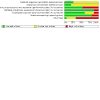
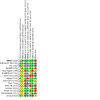
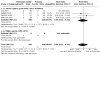
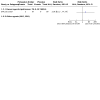
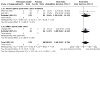
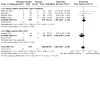
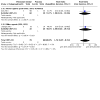
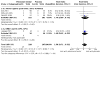
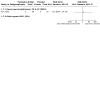
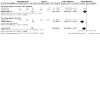

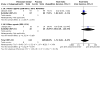
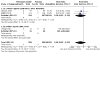
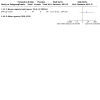
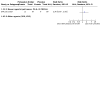
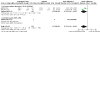



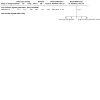
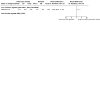




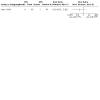
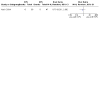
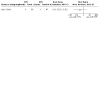
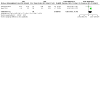


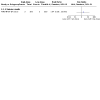
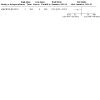
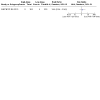
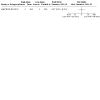
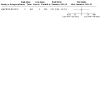

Update of
- doi: 10.1002/14651858.CD013165
References
References to studies included in this review
AMBER 2018 {published data only}
-
- Agarwal R, Rossignol P, Garza D, Mayo MR, Warren S, Arthur S, et al. Patiromer to enable spironolactone use in the treatment of patients with resistant hypertension and chronic kidney disease: rationale and design of the AMBER study. American Journal of Nephrology 2018;48(3):172-80. [MEDLINE: ] - PMC - PubMed
-
- Agarwal R, Rossignol P, Garza D, Mayo MR, Warren S, Ma J, et al. Patiromer to enable spironolactone in patients with resistant hypertension and CKD: primary results of amber [abstract]. American Journal of Kidney Diseases 2019;73(6):899. [EMBASE: 2001959391]
-
- Agarwal R, Rossignol P, Mayo M, Warren S, Ma J, Conrad A, et al. Patiromer vs. placebo to enable spironolactone in patients with resistant hypertension and CKD according to baseline kidney function (AMBER trial) [abstract no: TH-OR052]. Journal of the American Society of Nephrology 2019;30(Abstract Suppl):14.
-
- Agarwal R, Rossignol P, Romero A, Garza D, Mayo MR, Warren S, et al. Patiromer versus placebo to enable spironolactone use in patients with resistant hypertension and chronic kidney disease (AMBER): a phase 2, randomised, double-blind, placebo-controlled trial. Lancet 2019;394(10208):1540-50. [MEDLINE: ] - PubMed
-
- Williams B, Agarwal R, Rossignol P, Ackourey G, Garza D, Mayo MR, et al. Patiromer vs. placebo to enable spironolactone in patients with resistant hypertension and chronic kidney disease (AMBER): results in prespecified subgroups [abstract]. Journal of Cardiac Failure 2019;25(11):939. [EMBASE: 2003883004]
AMETHYST‐DN 2015 {published data only}
-
- Bakris G, Pitt B, Mayo M, Garza D, Stasiv Y, Zawadzki R, et al. Reduction of serum K+ with patiromer for 1 year in patients with diabetic CKD who developed hyperkalemia while on maximal losartan and/or spironolactone [abstract]. Journal of the American Society of Hypertension 2015;9(4 Suppl 1):e75-6. [EMBASE: 72244084]
-
- Bakris G, Pitt B, Weir M, Mayo M, Garza D, Stasiv Y, et al. Patiromer lowered serum potassium for up to 1 year in hyperkalemic patients with diabetes and advanced kidney disease on RAAS inhibitors [abstract NO: SuO019]. Nephrology Dialysis Transplantation 2015;30(Suppl 3):iii51-2. [EMBASE: 72206394]
-
- Bakris GL, Pitt B, Mayo M, Garza D, Stasiv Y, Berman L, et al. Effect of patiromer on hyperkalemia in patients with diabetic nephropathy: results of a 1-year randomized trial [abstract no: SA-PO1099]. Journal of the American Society of Nephrology 2014;25(Abstract Suppl):B5.
-
- Bakris GL, Pitt B, Weir MR, Freeman MW, Mayo MR, Garza D, et al. Effect of patiromer on serum potassium level in patients with hyperkalemia and diabetic kidney disease: the AMETHYST-DN randomized clinical trial [Erratum appears in JAMA. 2015 Aug 18;314(7):731 Note: Dosage error in article text; PMID: 26284731]. JAMA 2015;314(2):151-61. [MEDLINE: ] - PubMed
-
- Bushinsky D, Romero A, Du Mond C, Mayo M, Ketteler M. Effect of patiromer on serum potassium in hyperkalemic patients with severe CKD on RAAS inhibitors: results from OPAL-HK and amethyst-DN [abstract no: TO028]. Nephrology Dialysis Transplantation 2017;32(Suppl 3):iii89-90. [EMBASE: 617290254]
Ash 2015 {published data only}
-
- Ash SR, Singh B, Lavin PT, Stavros F, Rasmussen HS. Safety and efficacy of ZS 9, a novel selective cation trap, for treatment of hyperkalemia in CKD patients [abstract no: HI-OR05]. Journal of the American Society of Nephrology 2013;24(Abstract Suppl):2B.
-
- Singh B, Ash SA, Lavin PT, Yang A, Rasmussen HS. ZS-9, a novel selective cation trap, leads to a rapid and predictable rate of decline in serum potassium in patients with chronic kidney disease and hyperkalemia [abstract]. Journal of the American College of Cardiology 2014;63(12 Suppl 1):A369. [EMBASE: 71406393]
-
- Singh B, Ash SR, Lavin P, Yang A, Rasmussen HS. Change from baseline in serum K+ with ZS-9 in patients with chronic kidney disease treated for hyperkalemia [abstract]. Journal of the American Society of Hypertension 2014;8(4 Suppl 1):e68. [EMBASE: 71500582]
-
- Singh B, Ash SR, Lavin P, Yang A, Rasmussen HS. Effect of ZS-9, a novel selective cation trap, on urinary potassium and sodium excretion when used for the treatment of hyperkalemia in patients with chronic kidney disease [abstract]. Journal of the American Society of Hypertension 2014;8(4 Suppl 1):e15. [EMBASE: 71500462]
DIALIZE 2019 {published data only}
-
- Fishbane S, Ford M, Fukagawa M, McCafferty K, Rastogi A, Spinowitz B, et al. A phase 3b, randomized, double-blind, placebo-controlled study of sodium zirconium cyclosilicate for reducing the incidence of predialysis hyperkalemia. Journal of the American Society of Nephrology 2019;30(9):1723-33. [MEDLINE: ] - PMC - PubMed
-
- Fishbane S, Ford ML, Fukagawa M, McCafferty KRA, Spinowitz B, Staroselskiy K, et al. Sodium zirconium cyclosilicate (SZC) improves potassium balance in hyperkalemic hemodialysis patients: results from the phase 3b, randomized, placebo-controlled DIALIZE study [abstract no: SA-OR061]. Journal of the American Society of Nephrology 2019;30(Abstract Suppl):95.
Gruy‐Kapral 1998 {published data only}
-
- Gruy-Kapral C, Emmett M, Santa Ana CA, Porter JL, Fordtran JS, Fine KD. Effect of single dose resin-cathartic therapy on serum potassium concentration in patients with end-stage renal disease. Journal of the American Society of Nephrology 1998;9(10):1924-30. [MEDLINE: ] - PubMed
HARMONIZE 2014 {published data only}
-
- Alpert JS, Singh B, Menoyo J, Rasmussen H, Kosiborod M. Rapid onset of potassium: Lowering with sodium zirconium cyclosilicate (ZS-9) across patients stratified by race, age, and comorbidities in the randomized, double-blind, placebo-controlled phase 3 HARMONIZE study [abstract]. Journal of the American College of Cardiology 2016;67(13 Suppl 1):1345. [EMBASE: 72242848]
-
- De Francisco A, Rasmussen H, Lavin P, Singh B, Yang A, Jadoul M, et al. Achievement and maintenance of normokalaemia in patients with non-dialysis stage 5 chronic kidney disease [abstract no: FP003]. Nephrology Dialysis Transplantation 2015;30(Suppl 3):iii66-7. [EMBASE: 72206424]
-
- De Francisco A, Rasmussen H, Lavin P, Singh B, Yang A, Mann J, et al. Normalization of serum bicarbonate with sodium zirconium cyclosilicate (ZS-9) in the phase 3 randomized, double-blind, placebo-controlled HARMONIZE study [abstract no: FO012]. Nephrology Dialysis Transplantation 2015;30(Suppl 3):iii6. [EMBASE: 72206293]
-
- El-Shahawy MA, Rasmussen HS, Lavin PT, Yang A, Qunibi W. Treatment of hyperkalemia with ZS-9, a selective nonabsorbed cation exchange resin, does not lead to hypomagnesemia: results from two multicenter, randomized, double blind, placebo-controlled phase 3 trials [abstract]. Journal of the American College of Cardiology 2015;65(10 Suppl 1):A842. [EMBASE: 71833899]
-
- Jadoul M, Rasmussen H, Lavin P, Singh B, Yang A, Mann J, et al. Effect of sodium zirconium cyclosilicate (ZS-9) on urinary potassium and sodium: an analysis of the phase 3 randomized, double-blind, placebo-controlled HARMONIZE study [abstract no: FP001]. Nephrology Dialysis Transplantation 2015;30(Suppl 3):iii66. [EMBASE: 72206422]
Kashihara 2018 {published data only}
-
- Kashihara N, Nishio T, Osonoi T, Saka Y, Imasawa T, Ohtake T, et al. Correction of serum potassium with sodium zirconium cyclosilicate in Japanese patients with hyperkalemia: a dose-finding study [abstract no: TH-PO1157]. Journal of the American Society of Nephrology 2018;29(Abstract Suppl):B7. - PMC - PubMed
Lepage 2015 {published data only}
-
- Desforges K, Lepage L, Dufour A, Doiron J, Handfield K, Bell RZ, et al. Sodium polystyrene sulfonate for the treatment of mild hyperkalemia in chronic kidney disease: a randomized clinical trial [abstract no: SA-PO926]. Journal of the American Society of Nephrology 2015;26(Abstract Suppl):846a. - PMC - PubMed
Nakayama 2018 {published data only}
-
- Nakayama Y, Ueda K, Yamagishi SI, Sugiyama M, Yoshida C, Kurokawa Y, et al. Compared effects of calcium and sodium polystyrene sulfonate on mineral and bone metabolism and volume overload in pre-dialysis patients with hyperkalemia. Clinical & Experimental Nephrology 2018;22(1):35-44. [MEDLINE: ] - PubMed
Nasir 2014 {published data only}
-
- Nasir K, Ahmad A. Treatment of hyperkalemia in patients with chronic kidney disease: a comparison of calcium polystyrene sulphonate and sodium polystyrene sulphonate. Journal of Ayub Medical College, Abbottabad: JAMC 2014;26(4):455-8. [MEDLINE: ] - PubMed
OPAL‐HK 2015 {published data only}
-
- Bushinsky D, Romero A, Du Mond C, Mayo M, Ketteler M. Effect of patiromer on serum potassium in hyperkalemic patients with severe CKD on RAAS inhibitors: Results from OPAL-HK and amethyst-DN [abstract no: TO028]. Nephrology Dialysis Transplantation 2017;32(Suppl 3):iii89-90. [EMBASE: 617290254]
-
- Pitt B, Bakris GL, Bushinsky DA, Garza D, Mayo MR, Stasiv Y, et al. Effect of patiromer on reducing serum potassium and preventing recurrent hyperkalaemia in patients with heart failure and chronic kidney disease on RAAS inhibitors. European Journal of Heart Failure 2015;17(10):1057-65. [MEDLINE: ] - PMC - PubMed
-
- Pitt B, Weir M, Bushinsky D, Mayo M, Garza D, Stasiv Y, et al. Patiromer reduces serum K+ in hyperkalemic patients with HF and CKD on RAAS inhibitors: results from OPAL-HK and AMETHYST-DN [abstract]. Journal of Cardiac Failure 2015;21(8 Suppl 1):S107-8. [EMBASE: 72169334]
-
- Pitt B, Weir M, Bushinsky DA, Mayo M, Garza D, Stasiv Y, et al. Patiromer reduced serum K+ in hyperkalaemic patients with HF and advanced CKD on RAAS inhibitors: results from OPAL-HK and AMETHYST-DN [abstract no: P1799]. European Heart Journal 2015;36(Suppl 1):318-9. [EMBASE: 72019966]
-
- Pitt B, Weir M, Mayo M, Garza D, Christ-Schmidt H, Wittes J, et al. Patiromer lowers serum potassium and prevents recurrent hyperkalemia in patients with heart failure and CKD when treated with RAAS inhibitors: results from OPAL-HK [abstract no: 9]. Heart & Lung 2015;44(6):550. [EMBASE: 623564660]
Packham 2015 {published data only}
-
- El-Shahawy M, Rasmussen HS, Lavin PT, Yang A, Packham DK. Acute-phase efficacy of ZS-9 in patients with baseline serum potassium levels above 5.5 MEQ/l: analysis from a phase 3, multicenter, randomized, double blind, placebo-controlled trial [abstract]. Journal of the American College of Cardiology 2015;65(10 Suppl 1):A878. [EMBASE: 71833935]
-
- El-Shahawy MA, Rasmussen HS, Lavin PT, Yang A, Packham DK. Acute-phase efficacy in a phase 3 multicenter, randomised, double-blind, placebo-controlled trial of ZS-9 for hyperkalaemia [abstract no: SP320]. Nephrology Dialysis Transplantation 2014;29(Suppl 3):iii178. [EMBASE: 71491947]
-
- El-Shahawy MA, Rasmussen HS, Lavin PT, Yang A, Qunibi WY. Once daily ZS-9 for treatment of hyperkalemia: achievement and maintenance of normokalemia in black patients in a phase 3, multicenter, randomized, double-blind, placebo-controlled trial [abstract no: SA-PO152]. Journal of the American Society of Nephrology 2014;25(Abstract Suppl):669A.
-
- El-Shahawy MA, Singh B, Rasmussen HS, Lavin PT, Yang A, Qunibi W. Maintenance of normal serum K+ with ZS-9 once daily in patients with CHF: subgroup analysis of a phase 3 multicenter, randomised, double-blind placebo-controlled trial of patients with hyperkalaemia [abstract no: 4140]. European Heart Journal 2014;35(Suppl 1):722. [EMBASE: 71649437]
-
- El-Shahawy MA, Singh B, Rasmussen HS, Lavin PT, Yang A, Qunibi W. Maintenance of normokalemia with ZS-9 once daily in CHF patients on RAAS inhibitors: subgroup analysis of a phase 3 multicenter, randomized, double-blind, placebo-controlled trial of patients with hyperkalemia [abstract no: 503]. Hypertension 2014;64(Suppl 1):na. [EMBASE: 71746082]
PEARL‐HF 2011 {published data only}
-
- Bushinsky DA, Huang IZ, Anker SD, Zannad F, Pitt B. RLY5016: A novel, effective, non-absorbed, oral polymer for the control of serum potassium in heart failure and chronic kidney disease [abstract no: F-PO1617]. Journal of the American Society of Nephrology 2010;21(Abstract Suppl):483A.
-
- Pitt B, Anker SD, Bushinsky DA, Kitzman DW, Zannad F, Huang IZ, et al. Evaluation of the efficacy and safety of RLY5016, a polymeric potassium binder, in a double-blind, placebo-controlled study in patients with chronic heart failure (the PEARL-HF) trial. European Heart Journal 2011;32(7):820-8. [MEDLINE: ] - PMC - PubMed
TOURMALINE 2017 {published data only}
-
- Bushinsky DA, Spiegel DM, Yuan J, Warren S, Fogli J, Pergola PE. Effects of patiromer on markers of mineral metabolism in patients with hyperkalemia and hyperphosphatemia [abstract no: TH-PO199]. Journal of the American Society of Nephrology 2018;29(Abstract Suppl):163.
-
- Kloner RA, Gross C, Yuan J, Conrad A, Pergola PE. Effect of patiromer in hyperkalemic patients with or without RAASi [abstract no: 14680]. Circulation 2017;136(Suppl 1):na. [EMBASE: 619984014]
Wang 2018a {published data only}
-
- Wang J, Lv MM, Zach O, Wang LY, Zhou MY, Song GR, et al. Calcium-polystyrene sulfonate decreases inter-dialytic hyperkalemia in patients undergoing maintenance hemodialysis: a prospective, randomized, crossover study. Therapeutic Apheresis & Dialysis 2018;22(6):609-16. [MEDLINE: ] - PubMed
References to ongoing studies
DIALIZE China 2020 {published data only}
-
- Ni Z. Reduce incidence of pre-dialysis hyperkalaemia with sodium zirconium cyclosilicate in Chinese subjects (DIALIZE China). www.clinicaltrials.gov/ct2/show/NCT04217590 (first received 3 January 2020).
DIAMOND 2019 {published data only}
-
- Goehring UM. Patiromer for the management of hyperkalemia in subjects receiving RAASi medications for the treatment of heart failure (DIAMOND). www.clinicaltrials.gov/ct2/show/NCT03888066 (first received 25 March 2019).
NCT03781089 {published data only}
-
- Middleton JP. Patiromer efficacy to reduce episodic hyperkalemia in end stage renal disease patients. www.clinicaltrials.gov/ct2/show/NCT03781089 (first received 19 December 2018).
Additional references
Alvarez 2017
-
- Alvarez P, Brenner M, Butler J, Farnum C, Kangethe A, Lafayette R, et al. Focus on hyperkalemia management: expert consensus and economic impacts. Journal of Managed Care & Specialty Pharmacy 2017;23(4-a Suppl):S2-20. [DOI: 10.18553/jmcp.2017.23.4-a.s2] - DOI
Batterink 2015
Betts 2018
-
- Betts KA, Woolley JM, Mu F, McDonald E, Tang W, Wu EQ. The prevalence of hyperkalemia in the United States. Current Medical Research & Opinion 2018;34(6):971-8. [MEDLINE: ] - PubMed
Bozkurt 2003
-
- Bozkurt B, Agoston I, Knowlton AA. Complications of inappropriate use of spironolactone in heart failure: when an old medicine spirals out of new guidelines. Journal of the American College of Cardiology 2003;41(2):211-4. [MEDLINE: ] - PubMed
Chowdhury 2018
Collins 2017
Cowan 2017
-
- Cowan AC, Ghariba EG, Weir MA. Advances in the management of hyperkalemia in chronic kidney disease. Current Opinion in Nephrology & Hypertension 2017;26(3):235-9. [MEDLINE: ] - PubMed
Das 2018
-
- Das S, Dey JK, Sen S, Mukherjee R. Efficacy and safety of patiromer in hyperkalemia: a systematic review and meta-analysis. Journal of Pharmacy Practice 2018;31(1):6-17. [MEDLINE: ] - PubMed
Davidson 2017
Dunn 2015
-
- Dunn JD, Benton WW, Orozco-Torrentera E, Adamson RT. The burden of hyperkalemia in patients with cardiovascular and renal disease. American Journal of Managed Care 2015;21(15 Suppl):S307-15. [MEDLINE: ] - PubMed
Einhorn 2009
FDA 2015
-
- Food Drug Administration. Drug approval. Veltassa (Patiromer) powder for oral suspension. Application No: 205739. Approved October 21, 2015. www.accessdata.fda.gov/drugsatfda_docs/nda/2015/205739Orig1s000Approv.pdf (accessed 10 June 2020).
FDA 2018
-
- Food Drug Administration. Drug approval. Lokelma (sodium zirconium cyclosilicate) for oral suspension. Application No: 207078. Approved May 18, 2018. www.accessdata.fda.gov/drugsatfda_docs/label/2018/207078s000lbl.pdf (accessed 10 June 2020).
Fried 2017
GRADE 2008
GRADE 2011
-
- Guyatt G, Oxman AD, Akl EA, Kunz R, Vist G, Brozek J, et al. GRADE guidelines: 1. Introduction-GRADE evidence profiles and summary of findings tables. Journal of Clinical Epidemiology 2011;64(4):383-94. [MEDLINE: ] - PubMed
Higgins 2003
Higgins 2011
-
- Higgins JP, Green S (editors). Cochrane Handbook for Systematic Reviews of Interventions Version 5.1.0 [updated March 2011]. The Cochrane Collaboration, 2011. Available from www.cochrane-handbook.org.
James 2014
-
- James PA, Oparil S, Carter BL, Cushman WC, Dennison-Himmelfarb C, Handler J, et al. 2014 evidence-based guideline for the management of high blood pressure in adults: report from the panel members appointed to the Eighth Joint National Committee (JNC 8).[Erratum in JAMA. 2014 May 7;311(17):1809]. JAMA 2014;311(5):507-20. [MEDLINE: ] - PubMed
KDIGO 2013
-
- Levin A, Stevens PE, Bilous RW, Coresh J, De Francisco AL, De Jong PE, et al. Kidney Disease: Improving Global Outcomes (KDIGO) CKD Work Group. KDIGO 2012 clinical practice guideline for the evaluation and management of chronic kidney disease. Kidney International Supplements 2013;3(1):1-150. [EMBASE: 369856107]
Kumar 2017
-
- Kumar R, Kanev L, Woods SD, Brenner M, Smith B. Managing hyperkalemia in high-risk patients in long-term care. American Journal of Managed Care 2017;23(2 Suppl):S27-36. [MEDLINE: ] - PubMed
Mahoney 2005
Montford 2017
Moranne 2009
Ng 2017
-
- Ng KE, Lee CS. Updated treatment options in the management of hyperkalemia. U.S. Pharmacist 2017;42(2):HS15-8. [EMBASE: 614599844]
Palaka 2018
-
- Palaka E, Leonard S, Buchanan-Hughes A, Bobrowska A, Langford B, Grandy S. Evidence in support of hyperkalaemia management strategies: A systematic literature review. International Journal of Clinical Practice 2018;72(2). [MEDLINE: ] - PubMed
Palmer 2004
-
- Palmer BF. Managing hyperkalemia caused by inhibitors of the renin-angiotensin-aldosterone system. New England Journal of Medicine 2004;351(6):585-92. [MEDLINE: ] - PubMed
Rafique 2017
-
- Rafique Z, Weir MR, Onuigbo M, Pitt B, Lafayette R, Butler J, et al. Expert panel recommendations for the identification and management of hyperkalemia and role of patiromer in patients with chronic kidney disease and heart failure. Journal of Managed Care & Specialty Pharmacy 2017;23(4-a Suppl):S10-9. [MEDLINE: ] - PMC - PubMed
RALES 1996
-
- Effectiveness of spironolactone added to an angiotensin-converting enzyme inhibitor and a loop diuretic for severe chronic congestive heart failure (the Randomized ALdactone Evaluation Study [RALES]). American Journal of Cardiology 1996;78(8):902-7. [MEDLINE: ] - PubMed
Schunemann 2011a
-
- Schünemann HJ, Oxman AD, Higgins JP, Vist GE, Glasziou P, Guyatt GH. Chapter 11: Presenting results and 'Summary of findings' tables. In: Higgins JP, Green S (editors). Cochrane Handbook for Systematic Reviews of Interventions Version 5.1.0 [updated March 2011]. The Cochrane Collaboration, 2011. Available from www.cochrane-handbook.org.
Schünemann 2011b
-
- Schunemann HJ, Oxman AD, Higgins JP, Deeks JJ, Glasziou P, Guyatt GH. Chapter 12: Interpreting results and drawing conclusions. In: Higgins JP, Green S (editors). Cochrane Handbook for Systematic Reviews of Interventions Version 5.1.0 [updated March 2011]. The Cochrane Collaboration, 2011. Available from www.cochrane-handbook.org.
Shah 2005
-
- Shah KB, Rao K, Sawyer R, Gottlieb SS. The adequacy of laboratory monitoring in patients treated with spironolactone for congestive heart failure. Journal of the American College of Cardiology 2005;46(5):845-9. [MEDLINE: ] - PubMed
SONG 2017
-
- SONG Initiative. The SONG Handbook Version 1.0. www.songinitiative.org/reports-and-publications/ (accessed 10 June 2020).
Tamargo 2018
-
- Tamargo J, Caballero R, Delpón E. New therapeutic approaches for the treatment of hyperkalemia in patients treated with renin-angiotensin-aldosterone system inhibitors. Cardiovascular Drugs & Therapy 2018;32(1):99-119. [MEDLINE: ] - PubMed
Weiner 2010
-
- Weiner ID, Linas SL, Wingo CS. Disorders of potassium metabolism. In: Floege J, Johnson RJ, Feehally J, editors(s). Comprehensive Clinical Nephrology. 4th edition. Philadelphia: Saunders/Elsevier, 2010:118-29.
Weir 2015
-
- Weir MR, Bakris GL, Bushinsky DA, Mayo MR, Garza D, Stasiv Y, et al. Patiromer in patients with kidney disease and hyperkalemia receiving RAAS inhibitors. New England Journal of Medicine 2015;372(3):211-21. [MEDLINE: ] - PubMed
References to other published versions of this review
Publication types
MeSH terms
Substances
Associated data
LinkOut - more resources
Full Text Sources
Medical

